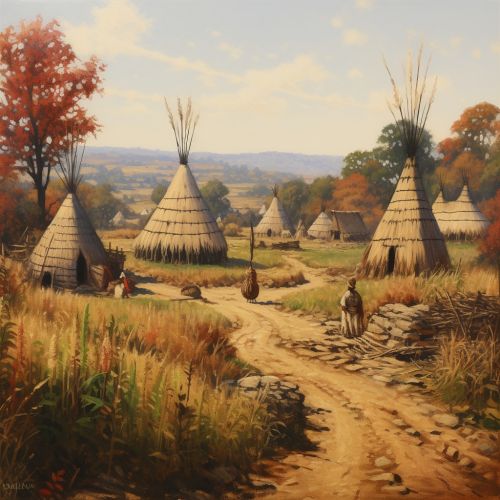History of New York City
Pre-colonial era
Before the arrival of European explorers, the area that would become New York City was inhabited by various tribes of the Algonquin Native Americans. The Lenape, a tribe within the Algonquin nation, were the primary inhabitants of the region, living in small bands and subsisting through hunting, fishing, and agriculture. The Lenape had a complex social structure, with clans and tribes led by sachems, or chiefs.


Colonial era
In 1524, Italian explorer Giovanni da Verrazzano became the first European to explore the area, sailing into what is now known as New York Harbor. However, it was not until 1609 that the region was extensively explored by Englishman Henry Hudson, who was employed by the Dutch East India Company. Hudson's exploration led to Dutch claims to the area and the establishment of the colony of New Netherland.
In 1624, the Dutch West India Company sent the first settlers to the area, establishing a trading post on Governors Island and later, in 1626, purchasing Manhattan Island from the Lenape. This purchase, often mythologized as costing only $24 in trade goods, marked the beginning of the city of New Amsterdam on the southern tip of Manhattan.
English rule and Revolutionary War
In 1664, the English seized New Amsterdam from the Dutch and renamed it New York, after the Duke of York. The city grew in importance under English rule, becoming a major port and commercial center.
In the lead up to the American Revolution, New York City was a hotbed of political activity. The Stamp Act Congress met in the city in 1765 to draft a message to King George III protesting the Stamp Act. During the war, the city was a strategic location, and was held by the British from 1776 to 1783.
19th century
The 19th century saw significant growth and change for New York City. The opening of the Erie Canal in 1825 connected the city to the Great Lakes, fueling a massive increase in trade and leading to an economic boom. By the mid-19th century, New York City was the largest city in the Western Hemisphere.
The city also saw significant social and cultural changes during this period. The influx of immigrants, particularly from Ireland and Germany, changed the city's demographics and culture. The city was also a center of the abolitionist movement, and was a stop on the Underground Railroad, a network of secret routes and safe houses used by enslaved African Americans to escape to free states and Canada.
20th century
The 20th century was a period of dramatic change for New York City. The city's population continued to grow, fueled by immigration and the annexation of surrounding areas, including Brooklyn, Queens, The Bronx, and Staten Island, to form Greater New York in 1898.
The city became a global center of industry, commerce, and culture. The construction of iconic structures such as the Statue of Liberty, Empire State Building, and the United Nations Headquarters symbolized the city's status as a global metropolis.
However, the city also faced significant challenges, including the Great Depression, the 1975 fiscal crisis, and the September 11, 2001 terrorist attacks, which destroyed the World Trade Center and killed nearly 3,000 people.
21st century
In the 21st century, New York City has continued to evolve and adapt. The city has faced new challenges, including the aftermath of the 9/11 attacks, the 2008 financial crisis, and the COVID-19 pandemic. However, it has also seen significant developments, including the rebuilding of the World Trade Center site, the opening of the High Line park, and the continued growth of the city as a global center of finance, media, and culture.


